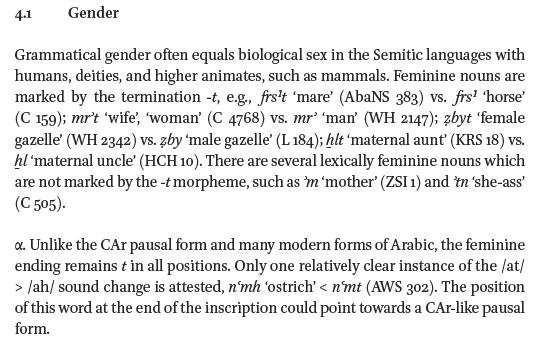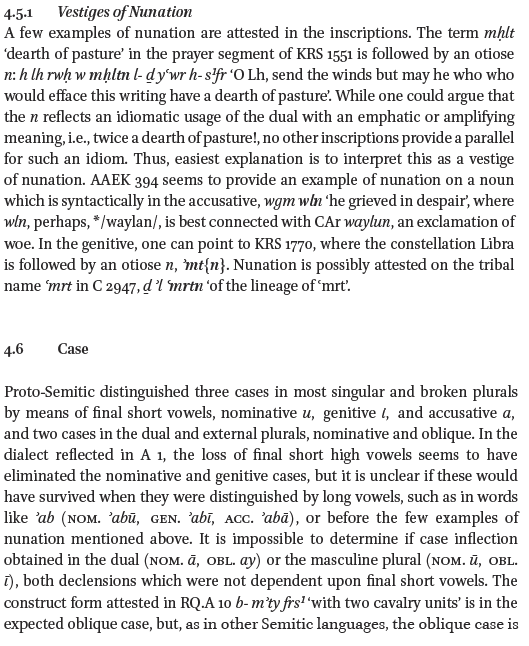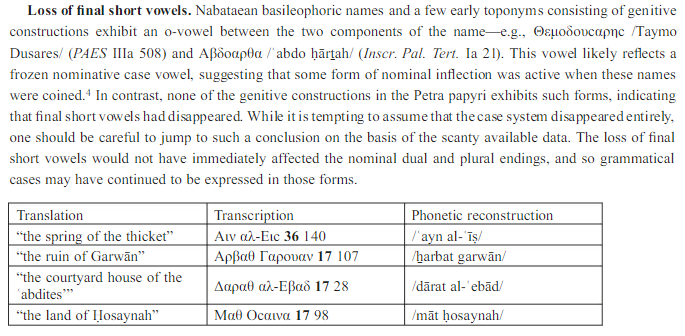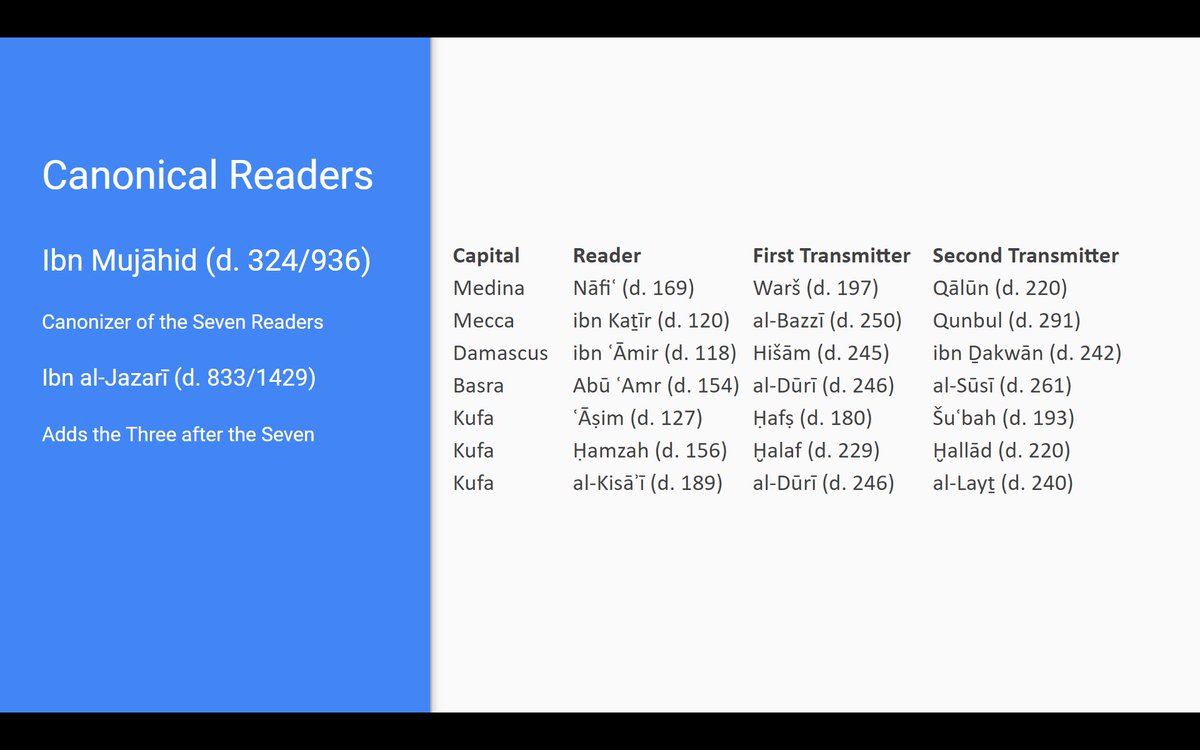Let me first introduce some of the key concepts and then "why" it happens and finally if it can be detected in pre-Quranic material.
Indefiniteness is marked by word final -n.
rajul-u-n 'a man (nominative); ...-i-n (genitive); ...-a-n (accusative)
ar-rajul-u 'the man (nom); ...-i (gen); ...-a (acc)
1. -u(n), -i(n), -a disappear
2.-an becomes -ā
rajul 'a man (nom/gen)'; rajulā (acc)
ar-rajul 'the man' (nom/gen/acc)
qiṭṭat-u-n/-i-n/-a-n > qiṭṭah 'a cat'
al-qiṭṭat-u/-i/-a > al-qiṭṭah 'the cat'
rajulū, rajulī, rajulā
ar-rajulū, ar-rajulī, ar-rajulā
See @ProfJCEWatson's excellent work on this topic.
researchgate.net/publication/30…
The feminine singular: -at (not -a or -ah as usual!)
The feminine plural is: -āt
But in pause they become -ay and -āy
I've written on the historical implications of this effect in this article:
academia.edu/18687778/_The_…
ghawat 'a coffee', ghawat-in 'a certain coffee'
il-ghawat 'the coffee'
But in pause:
ghawa, ghawa, il-ghawa.
1. short vowels are lost
2. -un/-in is lost -an becomes ā
3. -at > -ah
But this predicts the wrong form for the pausal feminine accusative.
I have written on this issue:
academia.edu/35131582/_The_…
Such forms of Arabic exist in Yemen.
academia.edu/37481811/Case_…
There is some occasional poetry that has "prose pause", but I assume those are mostly later.
Nunation is gone as a regular phenomenon, and only the final -a seems to survive in pause (or anywhere else).
brill.com/view/title/272…


For more on wawation and Nabataean Arabic case:
academia.edu/33017695/One_w…
academia.edu/37215697/Al_Ja…

The Classical Arabic case/mood system with final short vowels and indefinite -n is certainly archaic and shows many similarities to other Semitic languages.
But why and it became the sole marker of "proper Arabic" is unknown.
But the way it functions in detail leads to phonetically implausible developments that suggest there has been a good deal of artificial reconfiguration by the Arab grammarians.


























